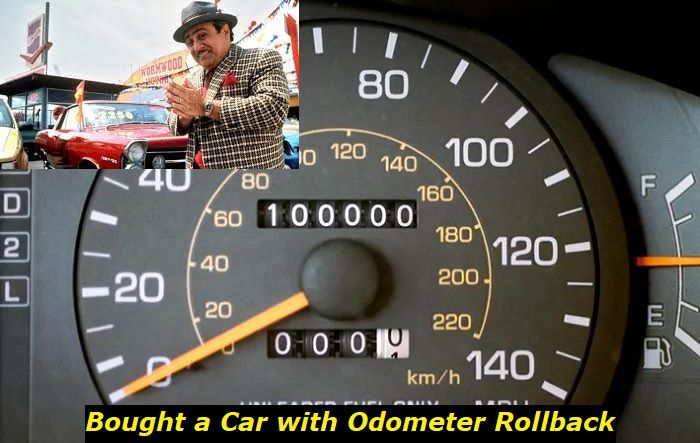Chrysler is now part of Stellantis and it owns several car brands all over the world. But it used to be a very powerful company that made a lot of legendary technologies and did really much for the automotive world development.
In this article, I will briefly cover all the engines that I've reviewed in this blog. Also, you will have the link to a more detailed article in each section to learn more about the technologies, durability, quality, and other important factors of the engine.
.jpg)
Please note the section will be enhanced in the future as I review other Chrysler engines and I will add new sections here.
Chrysler 3.6L eTorque Pentastar V6 engine
This is the standard Pentastar engine that has V6 architecture and offers a lot of power. Also, the eTorque version is fitted with the additional 48-volt battery pack and the motor-generator instead of the simple alternator. It means you will have a more efficient start-stop feature.
This engine is perfect in terms of quality but it's not perfect when it comes to fuel consumption. The Pentastar machine loves good maintenance and is going to live for ages if serviced and repaired properly. Otherwise, it can die much earlier than you think.
Although the Pentastar V6 engine got several upgrades within its life, it remains the same reliable and good-to-own engine to this day with no serious problems.
Key features and my opinion:
- Production years:2016-now
- Average lifespan of eTorque Pentastar V6:220,000-260,000 miles
- Fuel supply type:port injection (sequential)
- Power range:275-305 hp
- Fuel efficiency:good
- Engine block material:aluminum
- Engine reliability score:high
- The most common problems:minor issues with cylinder heads, rocker arm failure, weak cooling system, problems with the oil pump.
Chrysler 3.3L V6 EGA engine
This is one of the very long-lasting engines. It was first introduced by Chrysler in 1989 and lasted over two decades. Interestingly, it's one of the most renowned and respected engines in the lineup of the manufacturer.
Yes, it's reliable but the gas mileage is something you will not be happy with. Also, the EGA engine had a Flex Fuel version (for the E85) with a separate index EGM. This is the same engine with just some modifications for ethanol fuel combustion.
The engine was used in a lot of Chrysler, Dodge, Plymouth, and also Eagle vehicles. It was the best-seller in its best time but owners still found several common problems and they all said loudly about poor fuel economy.
Key features and my opinion:
- Production years:1989-2010
- Average lifespan of 3.3L V6 EGA:280,000-300,000 miles
- Fuel supply type:port injection
- Power range:150-180 hp
- Fuel efficiency:awful
- Engine block material:cast iron
- Engine reliability score:high
- The most common problems:awful fuel consumption, post-2002 plastic intake manifold may crack, oil consumption, timing chain issues.
Chrysler 6.1 Hemi engine
The 6.1L Hemi is the V8 engine that deserves your attention. It was used in the Chrysler 300C, several Dodge vehicles, and the Jeep Grand Cherokee. The engine is one of the simple Hemi machines with pretty understandable and reliable technologies.
Also, the company worked with some common problems of previously available Hemi engines and basically made one of the most reliable Hemi of all time. Yes, it still had some common issues and was discontinued after 5 years since the start of its production. But it's the legend.
The 6.1 Hemi had only one very serious problem - you had to buy fuel like crazy because its 8 cylinders were always thirsty for gas in any conditions.
Key features and my opinion:
- Production years:2005-2010
- Average lifespan of 6.1 Hemi:220,000-260,000 miles
- Fuel supply type:port injection
- Power range:431 hp
- Fuel efficiency:awful
- Engine block material:cast iron
- Engine reliability score:high
- The most common problems:awful fuel consumption, very demanding in terms of oil type, Hemi ticking noise, exhaust manifold problems.
Chrysler 6.4 Hemi engine
This is probably the most popular and legendary engine Chrysler ever made. It was first introduced in 2005 and is still available in some Stallantis models like the Jeep Wrangler Rubicon or the Chrysler 300C (discontinued in 2023).
Even though the engine is very large and has the V8 block, it still somehow fits the emission rules. Interestingly, the engine was modified several times but the construction and technologies remain unchanged from its start.
The 6.4 Hemi engine is very durable and its only serious problem is its fuel consumption which is fairly enormous. It powers mainly SRT models and gives a lot of power and torque. But still, the engine is not for everyone and it's very expensive to own.
Key features and my opinion:
- Production years:2005-2024
- Average lifespan of 6.4 Hemi:230,000-270,000 miles
- Fuel supply type:port injection
- Power range:470-525 hp
- Fuel efficiency:awful
- Engine block material:cast iron
- Engine reliability score:high
- The most common problems:hydraulic lifters will fail with wrong oil viscosity, EGR problems, exhaust manifold problems, Hemi ticking noise issues.
Chrysler 5.7 VVT Hemi engine
The 5.7L Hemi was introduced in 2003 to supplement the legendary 5.9 Magnum engine. But the 5.7 Hemi VVT was released in 2009. This is one of the legendary machines made by Chrysler and it's still available in some vehicles like the Jeep Wagoneer.
The engine is a V8 block, it offers wonderful torque and is great for the pickup truck. But it was used in all kinds of Chrysler vehicles.
One of the key things to mention is the addition of the VCT phaser (variable cam timing) which is basically the variable valve timing system. This upgrade made the engine much more efficient and economical but added several common problems.
Key features and my opinion:
- Production years:2009-now
- Average lifespan of 5.7 Hemi VVT:220,000-250,000 miles
- Fuel supply type:port injection
- Power range:355-395 hp
- Fuel efficiency:bad
- Engine block material:cast iron
- Engine reliability score:high
- The most common problems:you will need thin oil, otherwise lifters will die, EGR problems, exhaust manifold problems, Hemi ticking noise issues.
Chrysler 5.9 Magnum engine
The 5.9L Magnum engine was introduced in 1992 and was one of the legends of the Chrysler lineup. It was used mainly in Dodge vehicles and also in the Jeep Grand Cherokee in expensive trims.
This is the V8 engine with good power and torque. The engine is super simple in its construction and not very efficient in terms of fuel consumption. This was the era when American car manufacturers didn't think much about fuel efficiency.
This is the LA-series engine. There is nothing much I can tell you about the machine because it's as simple as a bicycle and doesn't cause any serious issues. Owners can boast huge mileage and zero problems.
Key features and my opinion:
- Production years:1992-2003
- Average lifespan of 5.9 Magnum:250,000-280,000 miles
- Fuel supply type:port injection
- Power range:230-250 hp
- Fuel efficiency:awful
- Engine block material:cast iron
- Engine reliability score:high
- The most common problems:very high octane number demand, lifters need high-quality oil, engine mounts aren't long-lasting, minor issues are pretty common.
Chrysler EcoDiesel engine
EcoDiesel engines weren't developed by Chrysler. They were made by VM Motori (GM and Fiat owned company). Some of them were exquisitely made for Europe while several diesel engines got under the hood of Chrysler cars.
Chrysler used 2.5L, 2.8L, 3.0L, and also the 3.1L diesel engines by VM Motori but the EcoDiesel is the 3.0L - the most common diesel engine under Stellantis cars' hoods.
These diesel engines are very fuel efficient. But they aren't the leaders in terms of durability. They will not live long. The manufacturer squeezed the most out of the relatively small engine and it gives much more than it should. But still, it's a very economical option for some Stellantis vehicles.
Key features and my opinion:
- Production years:2011-now
- Average lifespan of 3.0 EcoDiesel:180,000-200,000 miles
- Fuel supply type:Common Rail
- Power range:190-275 hp
- Fuel efficiency:good
- Engine block material:cast iron
- Engine reliability score:low
- The most common problems:crankshaft may crack at any time, the oil cooler may leak, the high-pressure fuel pump is weak, EGR and DPF problems, vibration issues.
About the authors
The CarAraC research team is composed of seasoned auto mechanics and automotive industry professionals, including individuals with advanced degrees and certifications in their field. Our team members boast prestigious credentials, reflecting their extensive knowledge and skills. These qualifications include: IMI: Institute of the Motor Industry, ASE-Certified Master Automobile Technicians; Coventry University, Graduate of MA in Automotive Journalism; Politecnico di Torino, Italy, MS Automotive Engineering; Ss. Cyril and Methodius University in Skopje, Mechanical University in Skopje; TOC Automotive College; DHA Suffa University, Department of Mechanical Engineering






Add comment